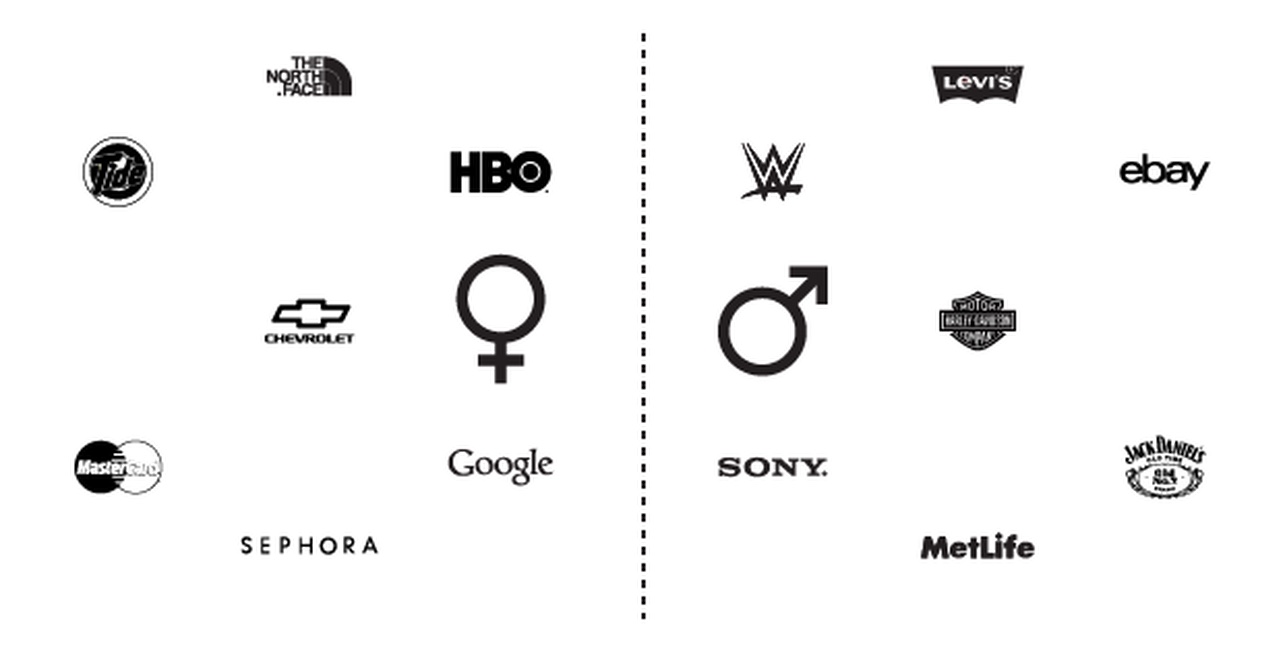After completing the most comprehensive research and rankings of brands based on emotion, MBLM also wanted to dig deeper to see if and how men and women form intimate brand relationships differently. After all, women drive 70–80 percent of all consumer purchasing.1
What we learned is, essentially, they don’t. They form these relationships in the same way and go through the same process to develop a close connection with a brand. What is a bit different is the brands/categories women attach to versus what men attach to and how age appears to be a significant factor in determining the brands we bond with.
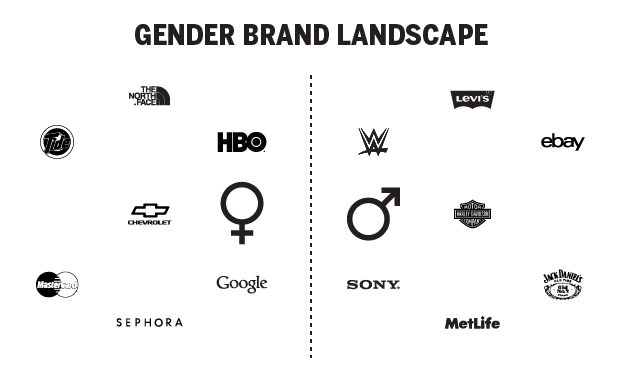
In general, women connect with a broad and more mature stable of brands than men do, especially brands that are practical or relevant to their lifestyles.
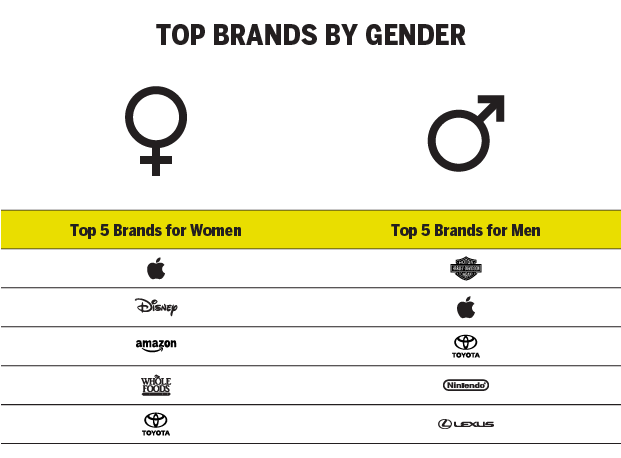
From this list, we observe that women have a more diverse range of top brands that involve more aspects of their daily life. Their top five brands include the dominant technology brand, family entertainment, convenient retail, health food, and transportation. For men, three of their five top brands are automotive, and are combined with a gaming brand and Apple, presenting a more “boys and their toys”-type of list. A Nielsen study found that women’s most trusted brands related to convenience, health, or their households, while trusted brands for men included more indulgent options, which seems to echo the Brand Intimacy findings.2
Interestingly, women had a slight edge over men in both the technology & telecom and retail industries, in terms of forming intimate relationships. The core of measuring Brand Intimacy is our Quotient model, with four stages that result in a Brand Intimacy Quotient Score (a score from 0–100; higher is better). You can get a detailed description of the model and how it works here. The video below also provides a high-level tour. Surprisingly, in a category like technology, where men dominate, women form stronger bonds across the category, with Apple and Facebook in particular. Women ranked Apple with a Quotient score of 77, while it averaged 71 with men. Facebook scored 30 with women and 25 with men.
Another component central to Brand Intimacy is archetypes. Six different archetypes are consistently present, in part or as a whole, among intimate brands and identify the character and nature of ultimate brand relationships.
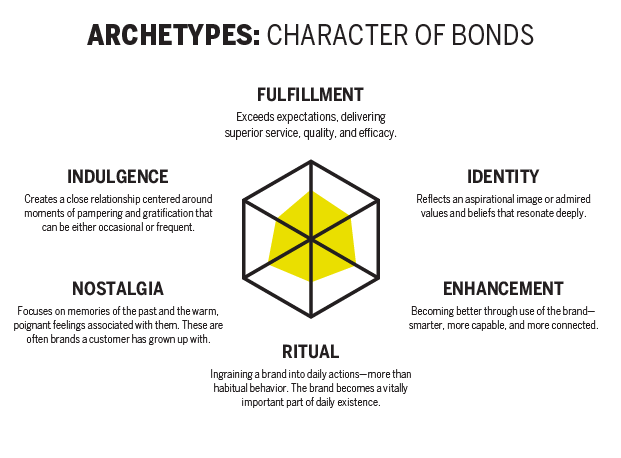
Overall, men and women are quite similar in the archetypes they ascribe to intimate brands, but there are a few nuances. Ritual, which is when a brand is ingrained into daily actions and is an important part of someone’s daily life, plays a bigger role with women for brands in the financial services, technology, and automotive categories. In other words, using a brand repeatedly so that it becomes essential is a more significant indicator of intimacy for women than for men. This may tie into the idea that relevant, practical brands do better with women. It also aligns with a study, “Decoding the Female Consumer & Brand Loyalty,” that observed brands with a clear and relevant purpose that aligned with women’s own interests and values sometimes outranked brands that spend more on marketing.3 Not everything is completely practical, however; indulgence, the archetype centering on pampering and gratification, is stronger among women in the retail and apparel industries.
Age also determines our brand preferences and bonds.
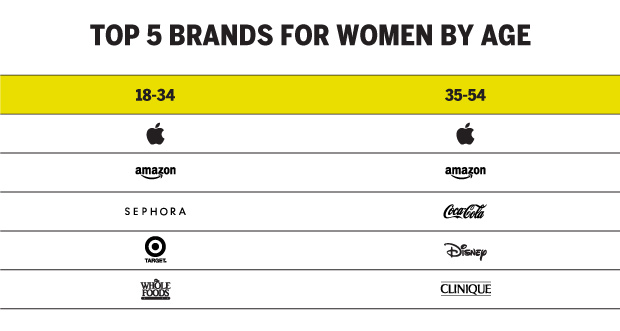
Age here indicates a differing range of industries that women are more likely to form intimate relationships with. For women 18–34 years old, retail is the dominant category, with four out of the top five brands reflecting that. Comparing that to women 35–54 years old, you see a more diverse list, with only one retail brand, complemented by technology, consumer goods, entertainment, and health & beauty.
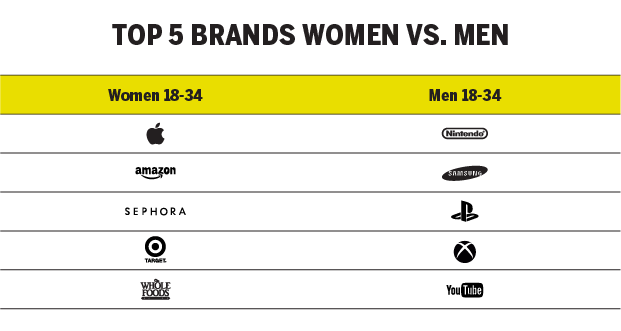
When you compare women 18–34 with men of the same age, you see an even bigger distinction. We mentioned that retail is dominant with younger women, yet with men of the same age, entertainment, notably gaming, dominates. This category is completely absent from women. As mentioned earlier, women also lead with more practical, daily brands-brands that they count on for communications (Apple), ease of shopping (Amazon), healthy food (Whole Foods) as well as a more indulgent offering like Sephora. Men are largely focused on entertainment.
Income plays another role in reviewing intimate brand relationships.
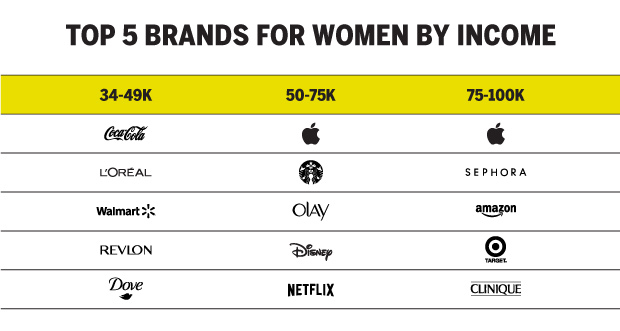
Women making 34–49K per year are most intimate with health & beauty brands—three of the top five brands reside in this category and are well-established mid-market brands such as Revlon and Dove. The other brands included in the top five are “staples”: Coca Cola and Walmart. For women with incomes of 50–75K, the list becomes a bit more diverse. Apple, Starbucks, and Netflix make the list, while Olay replaces L’Oréal, Revlon, and Dove as the health & beauty brand. Coca Cola remains on the list. Women making 75–150K, share no brands with women making 34–49K and share only one brand with women earning 50–75K: Apple. Clinique, an upscale health & beauty brand, is the only one on this list, complemented by three retail brands, a strong category where women bond well with brands.
What does all of this tell us?
It tells us that Brand Intimacy is very similar for men and women. How people form bonds with brands transcends gender; it is universal. That is an interesting and important consideration for marketers. However, we start to see specific findings related to women; these have to do with the types of brands women tend to connect with most strongly, the archetypes in specific categories that are more effective with women, and how age and income also influences brand choices. This is information that can help marketers better promote their products and services and also continue to deepen our understanding of how women form these deep brand attachments.
Review the sources cited in this article here.
To learn more about MBLM, click here.
